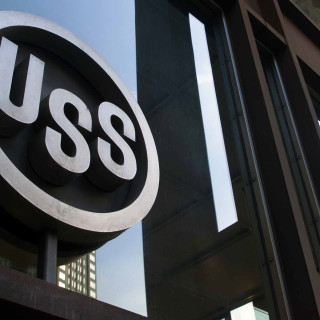They see everything happening in back of them
Reversing sensors which send acoustic (and better versions also optical) signals about the distance of obstacles from the rear part of the vehicle outside the
driver's field of vision are not only features of luxury private automobiles. We were convinced of this at the Road Transport operation of U. S. Steel Kosice Transport Division. They
have equipped their larger trucks with an optical communication system which significantly increases the safety of their movements.
The first camera was installed in December 2007, and the last was on January 30th of this year. Altogether 18 vehicles have been fitted with cameras - mobile cranes,
Tatra trucks, tractor units... This time the drivers needed no persuading about the advantages of this novelty. In the past they got a view of the situation in back of their vehicle only from
their rear-view mirrors, which could not show them the whole area to the rear. If they wanted to be absolutely sure, they always had to get out of the cab and walk round the vehicle to check what
was in back of it. Now it's enough for them to look at the screen in the cab, and they can see everything going on in back of them.
First traffic-lights, now LCD screens
The LCD screens which appeared recently in four works canteens - Public Access Area, Rolling Mills, Steel Plants and UMD - have come to life. Anyone who has watched
one of them for a while will have noticed the range of programs on offer. The theme of these short films is the area of occupational safety and health protection. This novelty, which is as yet in
trial operation, is explained by U. S. Steel Kosice Deputy GM Health and Safety Tomas Zagata.
"Employees often tell us that there are too many training sessions and all sorts of regulations, instructions and guidelines concerning occupational safety and
health protection, and that we should look for alternative forms of education. So now we're trying it by way of the screen. But why in the canteens exactly? These are places which are used by
many hundreds of employees every day. We're not forcing people to watch these films. It's not obligatory for anyone. Whoever wants to can look up at the screen, and those that don't, don't watch.
The sound is turned off, so it doesn't disturb anybody." Currently the screens are showing films dealing with fall prevention, hand-operated transport equipment, securing devices, and
familiarization with dangerous situations and the correct wearing of personal protective working equipment.
People are the beginning of the chain
First a tree has to be felled. A conifer is best. Then the trunk has to be cut into logs, the bark is removed, and they are transported to the paper-mill. There the
wood is hacked into tiny pieces in grinders, and the wood-chips are then boiled together with various other ingredients in great pots, producing a thick pulp which runs into a huge tub. Here,
sharp blades continue to mix and thicken the pulp until it turns into "paper web" which is then purified, bleached or dyed. Sieves remove the water, and steam-heated rollers dry out the web. This
is how paper is made - a product with an enormous range of uses, and whose consumption is rising all over the world. So it's no surprise that re-using of used paper has become the imperative of
the modern age.
Recycling saves natural resources, reduces the consumption of raw material and, the amount of waste requiring disposal, and cuts energy consumption, thereby
contributing in turn to reducing emissions of greenhouse gases. How is it with paper collection at U. S. Steel Kosice? "In our company we have a well worked-out system of waste-paper
collection," says GM Environmental Department's Waste Manager Peter Labas. "This started with us going to each Division's admin building and operational plants as well, and putting out around 140
collection containers whose purpose is visibly indicated. These are intended mainly for classical office paper, and for newspapers. Regular collection of filled containers is taken care of by
employees from the Protected Unit of our subsidiary U. S. Steel Services."












